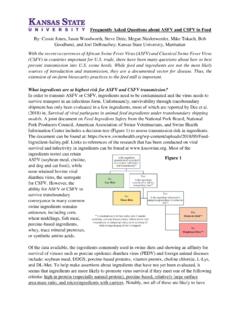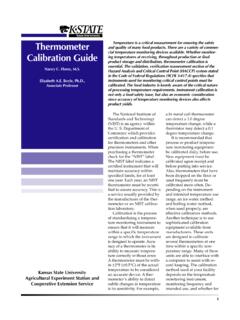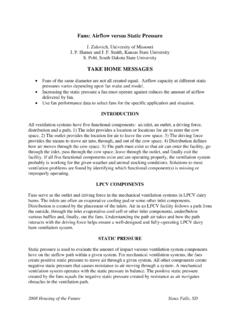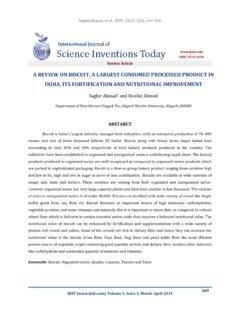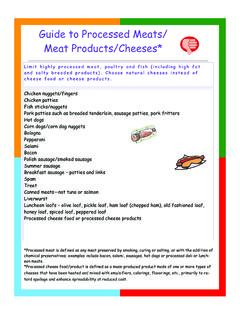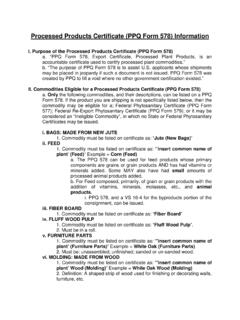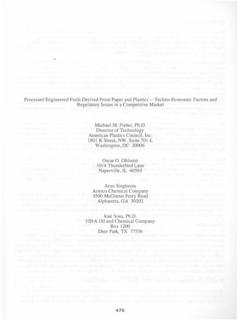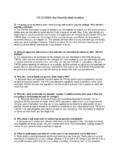Transcription of Ingredients in Processed Meat Products - K-State ASI
1 Ingredients in Processed Meat Products Elizabeth Boyle, Department of Animal Sciences and Industry Kansas State University March 1995 More than 200 kinds of sausages, luncheon meats, hams and canned meats are available to consumers. The use of nonmeat Ingredients , or additives, provides the meat industry with the flexibility needed for the development of a wide diversity of Products . All Processed meat Products have an ingredient statement on the product label. The Ingredients are listed in order of predominance so that the ingredient present in the greatest quantity is listed first while the ingredient present in the smallest amount is last. A typical ingredient statement might list "beef, pork, water, hydrolyzed vegetable protein, salt, dextrose, corn syrup, hydrolyzed milk protein, sodium phosphate, natural spices, smoke flavoring, sodium erythorbate, sodium nitrite." Each additive has specific functions in the product .
2 Water is added to many Products for several reasons. Some Products would be dry and unpalatable without adding water. Using water improves tenderness and juiciness, and it serves as a processing aid when the product is made. The amount of water that may be used in a product is regulated by the government. Some Products may contain extenders and binders such as vegetable and milk proteins, nonfat dry milk, dried whey and cereal flours. These Ingredients function to hold the product together, and to improve flavor, texture and cooking yield. In general, Processed meat Products may not contain more than percent extenders or binders unless it is labeled as an imitation product . Salt is used as a seasoning and a preservative, plus it functions to bind a product together. Many different spices are used to give meat Products distinctive flavors. Red, white and black pepper, mustard, garlic, allspice and cinnamon are among the spices most commonly used in sausages.
3 Liquid smoke is sometimes added to meat Products to provide a smoky flavor and aroma. Sweeteners such as dextrose and corn syrup are also used to enhance flavor. The addition of sugars or sweeteners to a product will also increase browning of meat during cooking. Phosphates are used to enhance juiciness and texture, and to help prevent fat from becoming rancid in Products such as ham, bacon and cooked sausages. The amount of phosphate that can be used in meat Products is limited to a maximum of percent. That means that no more than 8 ounces of phosphate can be used in 100 pounds of finished product . Sodium erythorbate is used to improve and maintain the color of Processed meats. Ascorbic acid, also known as vitamin C, sodium ascorbate and erythorbic acid are also used for this purpose. Sodium nitrite contributes to the characteristic flavor and color of cured meats, helps to prevent rancidity and serves to inhibit the growth of some microorganisms in Processed meat Products .
4 By using nonmeat Ingredients in Processed meat Products , consumers are provided with a large selection of meat Products .
